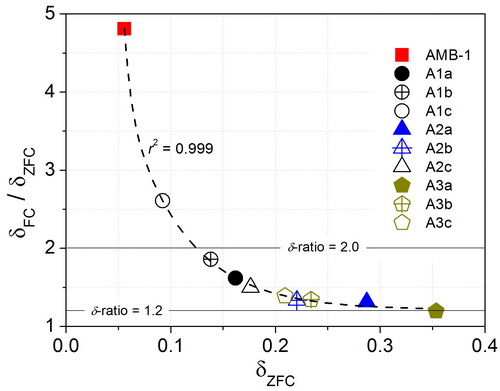Magnetic Anisotropy, Magnetostatic Interaction and the Identification of MagnetofossilsUpdate time:01 28, 2013
Postdoctor LI Jinhua and his cooperators carry out detailed rock magnetic measurements on three sets of magnetosome-bearing samples with systematic variations in chain integrity and particle concentration. Their aim is to investigate the effects of chain dependent magnetic anisotropy and magnetostatic interactions on the bulk magnetic properties of magnetosomes. This is important for magnetofossil identification in natural samples. This results in a change of the magnetic signature toward properties typical of interacting, single-domain particles, i.e., a decrease of the ratio of anhysteretic remanent magnetization to the saturation isothermal remanent magnetization, decreasing in the crossing point of the Wohlfarth-Cisowski test and in the delta ratio between losses of field and zero-field cooled remanent magnetization across the Verwey transition, as well as vertical broadening of the first-order reversal curve distribution. We propose a new diagram that summarizes the Verwey transition properties, with diagnostic limits for intact and collapsed chains of magnetosomes. This diagram can be used, in conjunction with other parameters, to identify unoxidized magnetofossils in sediments and rocks.
Fig.1. Electron microscopic observations of M. magneticum AMB-1 magnetosomes. (Image by LI)
Fig. 2. FORC diagrams measured on the studied series of AMB-1 magnetosome samples. (Image by LI)
Fig. 3.δ-plots for the studied series of AMB-1 magnetosome samples. (Image by LI) Li et al. Magnetic anisotropy, magnetostatic interaction and the identification of magnetofossils. Geochemistry Geophysics Geosystems. 2012, Q10Z51, doi:10.1029/2012GC004384 (Download Here)
|
Contact
Related Articles
Reference
|
-
SIMSSecondary Ion Mass Spectrometer Laboratory
-
MC-ICPMSMultiple-collector ICPMS Laboratory
-
EM & TEMElectron Microprobe and Transmission Electron Microscope Laboratory
-
SISolid Isotope Laboratory
-
StIStable Isotope Laboratory
-
RMPARock-Mineral Preparation and Analysis
-
AAH40Ar/39Ar & (U-Th)/He Laboratory
-
EMLElectron Microscopy Laboratory
-
USCLUranium Series Chronology Laboratory
-
SASeismic Array Laboratory
-
SEELaboratory of Space Environment Exploration Laboratory
-
PGPaleomagnetism and Geochronology Laboratory
-
BioMNSFrance-China Bio-mineralization and Nano-structure Laboratory

 Print
Print Close
Close


